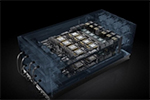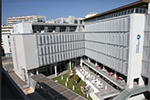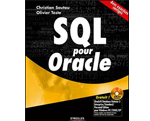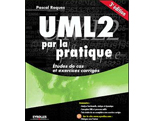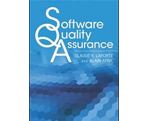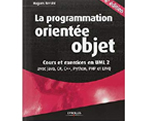ISO / IEC
- ISO (International Organization for Standardization)
- IEC (International Electrotechnical Commission)
- 9126
- 25010 / SQuaRE
ISO (International Organization for Standardization)
|
L'Organisation internationale de normalisation ISO est un organisme de normalisation international composé de représentants d'organisations nationales de normalisation de 165 pays. Cette organisation créée en 1947 a pour but de produire des normes internationales dans les domaines industriels et commerciaux appelées normes ISO. Elles sont utiles aux organisations industrielles et économiques de tout type, aux gouvernements, aux instances de réglementation, aux dirigeants de l'économie, aux professionnels de l'évaluation de la conformité, aux fournisseurs et acheteurs de produits et de services, dans les secteurs tant public que privé et, en fin de compte, elles servent les intérêts du public en général lorsque celui-ci agit en qualité de consommateur et utilisateur. |
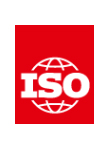
|
Le secrétariat central de l'ISO est situé à Genève, en Suisse. Il assure aux membres de l'ISO le soutien administratif et technique, coordonne le programme décentralisé d'élaboration des normes et procède à leur publication.
L'ISO est le plus grand organisme de normalisation au monde. C'est une organisation non gouvernementale représentant un réseau d'instituts nationaux de 165 pays, selon le principe d'un membre par pays.
IEC (International Electrotechnical Commission)
|
La Commission électrotechnique internationale ou International Electrotechnical Commission (IEC) en anglais, est l'organisation internationale de normalisation chargée des domaines de l'électricité, de l'électronique, de la compatibilité électromagnétique, de la nanotechnologie et des techniques connexes.
Elle est complémentaire de l'Organisation internationale de normalisation (ISO), qui est chargée des autres domaines. La CEI est composée de représentants de différents organismes de normalisation nationaux. |
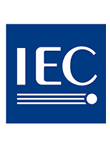
|
Originellement située à Londres, la Commission a rejoint ses quartiers généraux actuels de Genève en 1948. La CEI dispose de trois centres régionaux à Singapour, Sao Paulo et Worcester (Massachusetts).
La CEI a été l'instrument du développement et de la distribution de normes d'unités de mesure, notamment le gauss, le hertz, et le weber. Elle contribua également à proposer un ensemble de références, le système Giorgi, qui finalement fut intégré au Système international d'unités (SI) dont l'ISO est responsable.
9126
|
La norme ISO/CEI 9126 définissait un langage commun pour modéliser les qualités d'un logiciel.
Le langage de description utilise des termes tels que facteurs qualité, caractéristiques, sous-caractéristiques et métriques pour classer de façon arborescente et structurée,
sur la base de définitions standardisées, un vocable de plusieurs dizaines de propriétés en "ité" (portabilité, maintenabilité, fiabilité...). Elle est remplacée
depuis 2011 par la norme ISO 25010 de la série de normes ISO 250xx, également appelée SQuaRE (pour software quality requirements and evaluation en anglais,
c'est-à-dire exigences et évaluation de la qualité du logiciel). |
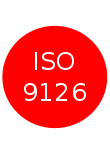
|
Capacité fonctionnelle : est-ce que le logiciel répond aux besoins fonctionnels exprimés ?
- Pertinence
- Exactitude
- Interopérabilité
- Sécurité
- Conformité
- Maturité (faible fréquence d'apparition des incidents)
- Tolérance aux pannes
- Facilité de récupération : capacité d'un logiciel défectueux à retourner dans un état opérationnel complet (données et connexions réseaux incluses)
- Facilité de compréhension
- Facilité d'apprentissage
- Facilité d'exploitation
- Comportement temporel : temps de réponse, taux de transactions
- Utilisation des ressources : mémoire, processeur, disque et réseau
- Facilité d'analyse : identification dans le logiciel de l'origine d'un défaut constaté
- Facilité de modification
- Stabilité
- Testabilité
- Facilité d'adaptation à des changements de spécifications ou d'environnements opérationnels
- Facilité d'installation
- Coexistence
- Interchangeabilité : utilisation de greffons
25010 / SQuaRE
|
The quality model is the cornerstone of a product quality evaluation system. The quality model determines which quality characteristics will be taken into account when evaluating the properties of a software product. The quality of a system is the degree to which the system satisfies the stated and implied needs of its various stakeholders, and thus provides value. Those stakeholders' needs (functionality, performance, security, maintainability, etc.) are precisely what is represented in the quality model, which categorizes the product quality into characteristics and sub-characteristics. The product quality model defined in ISO/IEC 25010 comprises the eight quality characteristics shown in the following figure: |
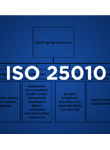
|

Functional Suitability
This characteristic represents the degree to which a product or system provides functions that meet stated and implied needs when used under specified conditions. This characteristic is composed of the following subcharacteristics:
- Functional completeness. Degree to which the set of functions covers all the specified tasks and user objectives.
- Functional correctness. Degree to which a product or system provides the correct results with the needed degree of precision.
- Functional appropriateness. Degree to which the functions facilitate the accomplishment of specified tasks and objectives.
Performance efficiency
This characteristic represents the performance relative to the amount of resources used under stated conditions. This characteristic is composed of the following subcharacteristics:
- Time behaviour. Degree to which the response and processing times and throughput rates of a product or system, when performing its functions, meet requirements.
- Resource utilization. Degree to which the amounts and types of resources used by a product or system, when performing its functions, meet requirements.
- Capacity. Degree to which the maximum limits of a product or system parameter meet requirements.
Compatibility
Degree to which a product, system or component can exchange information with other products, systems or components, and/or perform its required functions, while sharing the same hardware or software environment. This characteristic is composed of the following subcharacteristics:
- Co-existence. Degree to which a product can perform its required functions efficiently while sharing a common environment and resources with other products, without detrimental impact on any other product.
- Interoperability. Degree to which two or more systems, products or components can exchange information and use the information that has been exchanged.
Usability
Degree to which a product or system can be used by specified users to achieve specified goals with effectiveness, efficiency and satisfaction in a specified context of use. This characteristic is composed of the following subcharacteristics:
- Appropriateness recognizability. Degree to which users can recognize whether a product or system is appropriate for their needs.
- Learnability. degree to which a product or system can be used by specified users to achieve specified goals of learning to use the product or system with effectiveness, efficiency, freedom from risk and satisfaction in a specified context of use.
- Operability. Degree to which a product or system has attributes that make it easy to operate and control.
- User error protection. Degree to which a system protects users against making errors.
- User interface aesthetics. Degree to which a user interface enables pleasing and satisfying interaction for the user.
- Accessibility. Degree to which a product or system can be used by people with the widest range of characteristics and capabilities to achieve a specified goal in a specified context of use.
Reliability
Degree to which a system, product or component performs specified functions under specified conditions for a specified period of time. This characteristic is composed of the following subcharacteristics:
- Maturity. Degree to which a system, product or component meets needs for reliability under normal operation.
- Availability. Degree to which a system, product or component is operational and accessible when required for use.
- Fault tolerance. Degree to which a system, product or component operates as intended despite the presence of hardware or software faults.
- Recoverability. Degree to which, in the event of an interruption or a failure, a product or system can recover the data directly affected and re-establish the desired state of the system.
Security
Degree to which a product or system protects information and data so that persons or other products or systems have the degree of data access appropriate to their types and levels of authorization. This characteristic is composed of the following subcharacteristics:
- Confidentiality. Degree to which a product or system ensures that data are accessible only to those authorized to have access.
- Integrity. Degree to which a system, product or component prevents unauthorized access to, or modification of, computer programs or data.
- Non-repudiation. degree to which actions or events can be proven to have taken place, so that the events or actions cannot be repudiated later.
- Accountability. Degree to which the actions of an entity can be traced uniquely to the entity.
- Authenticity. Degree to which the identity of a subject or resource can be proved to be the one claimed.
Maintainability
This characteristic represents the degree of effectiveness and efficiency with which a product or system can be modified to improve it, correct it or adapt it to changes in environment, and in requirements. This characteristic is composed of the following subcharacteristics:
- Modularity. Degree to which a system or computer program is composed of discrete components such that a change to one component has minimal impact on other components.
- Reusability. Degree to which an asset can be used in more than one system, or in building other assets.
- Analysability. Degree of effectiveness and efficiency with which it is possible to assess the impact on a product or system of an intended change to one or more of its parts, or to diagnose a product for deficiencies or causes of failures, or to identify parts to be modified.
- Modifiability. Degree to which a product or system can be effectively and efficiently modified without introducing defects or degrading existing product quality.
- Testability. Degree of effectiveness and efficiency with which test criteria can be established for a system, product or component and tests can be performed to determine whether those criteria have been met.
Portability
Degree of effectiveness and efficiency with which a system, product or component can be transferred from one hardware, software or other operational or usage environment to another. This characteristic is composed of the following subcharacteristics:
- Adaptability. Degree to which a product or system can effectively and efficiently be adapted for different or evolving hardware, software or other operational or usage environments.
- Installability. Degree of effectiveness and efficiency with which a product or system can be successfully installed and/or uninstalled in a specified environment.
- Replaceability. Degree to which a product can replace another specified software product for the same purpose in the same environment.





